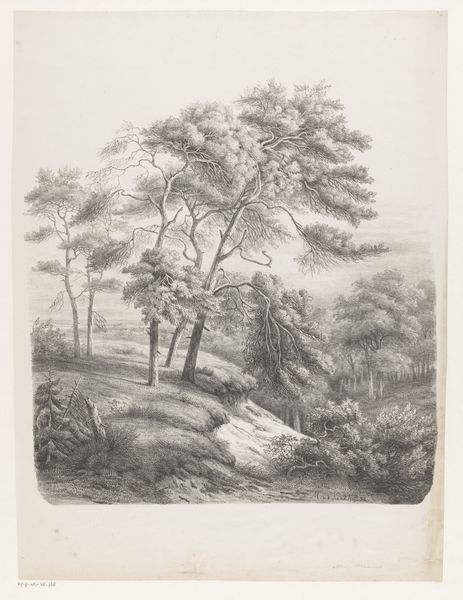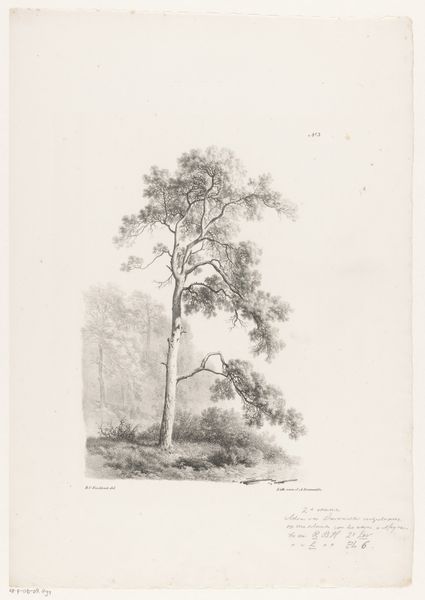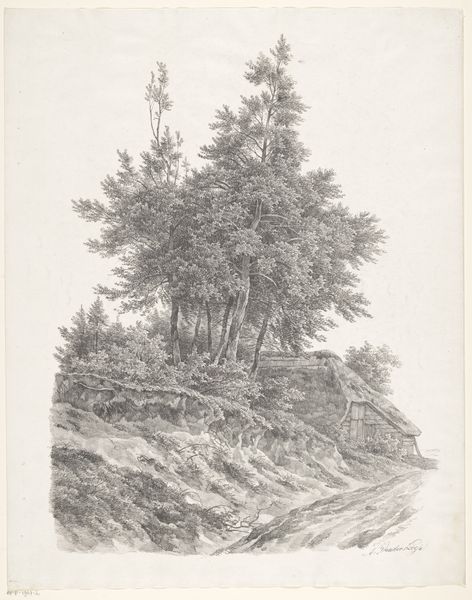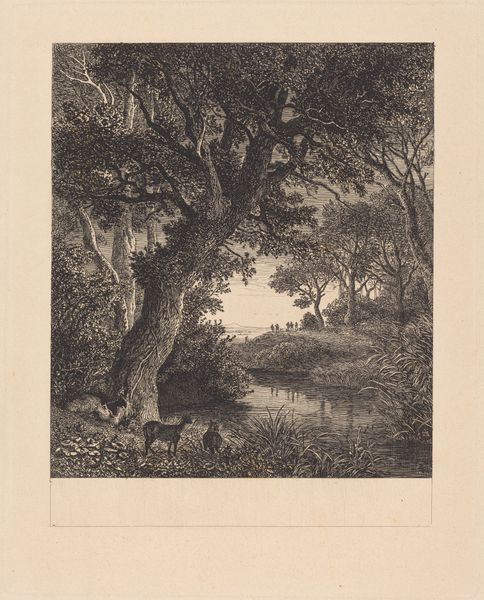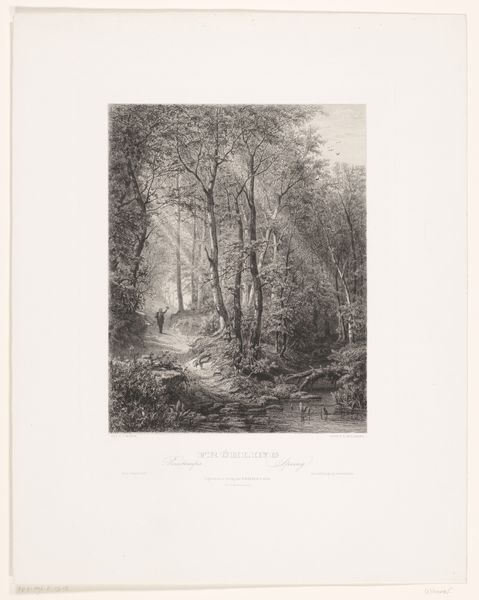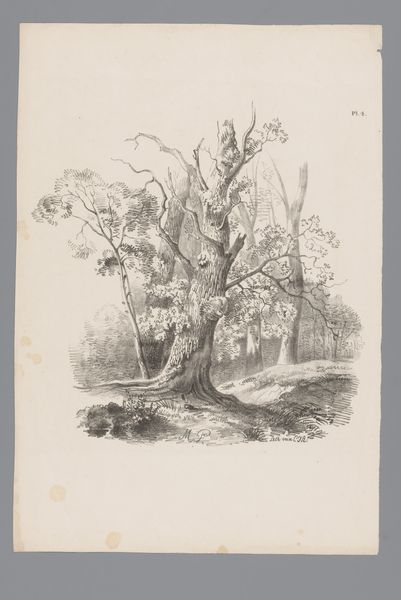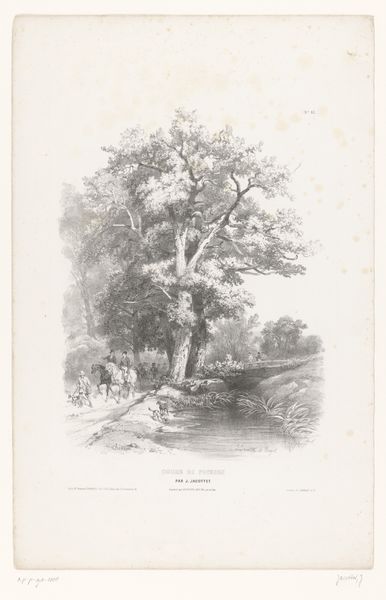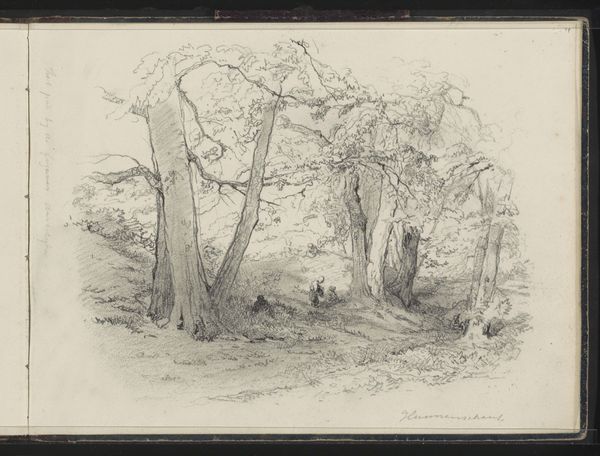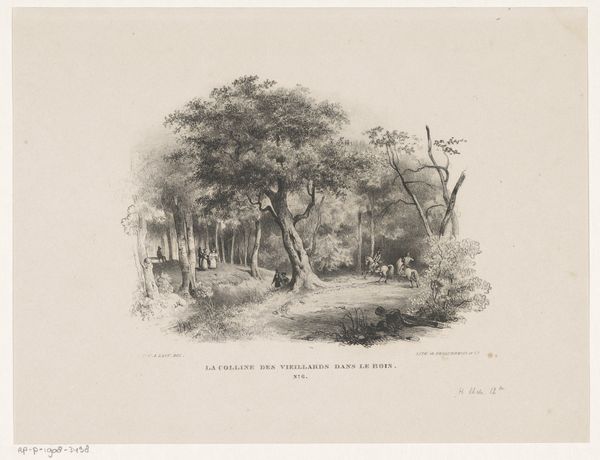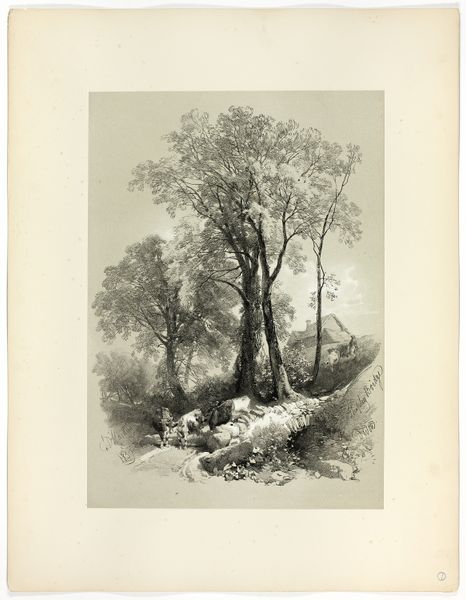
Dimensions: height 449 mm, width 314 mm
Copyright: Rijks Museum: Open Domain
This landscape with a reading figure, by Armand Théophile Cassagne, is an intriguing example of lithography. A skilled printer can achieve an amazing range of tones and textures, as we see here in the foliage, the dappled light, and the soft modeling of the figure. Lithography is a planographic process, meaning that the printing surface is flat. The image is drawn on a stone or metal plate with a greasy crayon, then treated so that ink adheres only to the drawn areas, and repelled elsewhere. This allows for a more direct, autographic mark than etching or engraving. Look closely and you’ll notice the subtle graininess, which is an inherent quality of the process. It gives the image a tactile quality, as if it were drawn directly. Cassagne uses this to his advantage, creating a rich, atmospheric effect. Although it is a mass-reproducible medium, lithography can convey a sense of intimacy. It is a reminder that even in industrial processes, the hand of the artist is still present, guiding the making.
Comments
No comments
Be the first to comment and join the conversation on the ultimate creative platform.
